History of Democracy in Guam
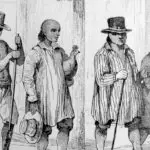
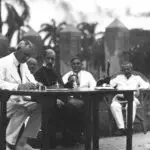
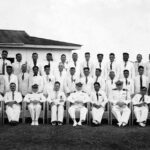
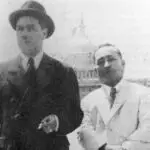
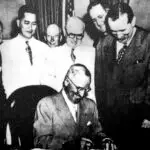
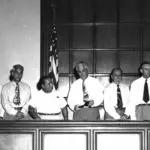
Table of Contents
Share This
Interpretive essay: Democracy movement goes back to 1800s
A common political fallacy is that democracy was a babe born in Guam during the mid-20th century under American rule.
The fact is that democracy had its beginning in Guam almost two centuries ago when benevolent Spanish authorities allowed the local electorates to choose their gobernadorcillos (mayors). This initial test of the local population’s ability to govern themselves took place long before all of us saw the light of day.
According to French historian Joseph Dubouzet, who visited Guam in the 19th century as a part of the Jules Sebastian Cesar Dumont d’Urville scientific expedition, here’s how the people of Humåtak chose their gobernadorcillo in 1839:
The laws which regulated these Spanish colonies were liberal and paternal toward the Indios (Chamorros). Their municipal regime is the envy of a less advanced country. We take testimony from one of the elections. The governor who assists was there only to prevent violation of the established procedures, but not to curtail liberty or to exert influence in favor of a candidate. The electors, called heads of the barangays, each represent one section of the village, thus divided to avoid the inconvenience of a direct election. Each one of them represent also several families according to their consent. All the electors united at the palace or city hall and each of them gave successively in writing the name of the candidate whom he judged most worthy to fill the office of gobernadorcillo. The votes are counted publicly and the candidates who receive the most votes are proclaimed in the following order: gobernadorcillo (mayor), teniente de justicia (judge), and alguacil (bailiff).
The local residents’ ability to govern themselves was tested between the time when the Spanish officials were removed from the island in 1898, and the establishment of the US Naval Era in 1899. Island affairs were left to a considerable extent in the hands of the CHamorus.
Laura Thompson says in Guam and Its People:
In a little more than a year the people of Guam, after a critical period of rivalry between local factions, had established their own civilian government with a native leader as governor, assisted by an advisory council made up of leading citizens and with a legislature in process of formation.
The promptness with which an emergency native government was set up by what appear to have been the real leaders of the island attests to the effectiveness of the experience in limited self-government which the people of Guam had had under Spain. And it is highly probable that, with their long experience in popular elections, they would soon have developed a form of civilian self-government suited to their needs and character, if the Americans had allowed them to do so. The events of the year 1898-1899 in Guam indicate that the CHamorus were at the time ready for and capable of developing a form of democratic government suited to island life and culture.
The year 1901 is also historically important because this was the year when local leaders first petitioned the US Government to determine the political status of the CHamorus. Thirty-two CHamoru leaders signed a petition proposing that the US Congress send a commission to Guam to study the situation, and present measures designed to establish a permanent government. The Naval governor (Seaton Schroeder) forwarded the petition to Congress with his approval and recommendation, and the Senate passed a bill in 1903 for the establishment of civil government in Guam, but it was blocked in the House of Representatives.
Bill of Rights for Guam
Thompson said little attention was paid to the civil rights of the CHamorus until 1930 when Captain Willis Winter Bradley, governor-commandant, proclaimed a Bill of Rights for Guam modeled after the first Ten Amendments to the US Constitution.
This Bill of Rights never went into effect, however, because the Secretary of the Navy informed the governor it did not meet with the approval of the Navy Department. But when the law codes were revised in 1933 many of the provisions of the Bill of Rights were incorporated into them.
Bradley also instituted general elections for the first time in 1931 when the people voted directly for representatives to the Guam Congress, an advisory body to the governors, and for municipal commissioners (mayors) and their deputies.
An earlier Guam Congress, comprised of commissioners, deputy commissioners, and residents of Hagåtña and outlying districts chosen by the people and approved by the governor, had assembled in 1917. It met once a month to advise the governor concerning improvements to the island, but it was later disbanded because several of the governors chose to ignore the Congress entirely.
The only step toward actual self-government allowed during the US Naval Era, an election of the vitally important, top municipal officers by popular vote, was cancelled in 1936 when a subsequent governor removed the office of commissioner and deputy commissioner from the elective list and made them appointed at the discretion of the governor. Thus, with one stroke, the people of Guam lost the only really effective measure of self-government they had gained during the American rule.
Thompson emphasized that although most of the Naval governors were genuinely interested in improving the CHamorus’ welfare their institutions, morals and mentalities were cast in a military mold keyed primarily to Navy interests. Their efforts at improvement constantly interfered with, rather than fostered, local community life and tended to suppress rather than stimulate and encourage native leadership, talent and creativity.
1936 journey to Washington DC
Citizenship drives came to the fore every now and then during the 1920s and 30s but the first major step was taken in 1936 when the House of Council and the House of Assembly sent a two-man delegation to Washington, DC, to lobby for US citizenship. The delegates were Francisco B. Leon Guerrero, Guam’s political maverick of the 30s, and Baltazar J. Bordallo, a diplomatically-inclined businessman.
With the financial and moral support of their colleagues, Leon Guerrero and Bordallo journeyed to a cold and indifferent Washington where they sought in vain citizenship legislation for Guam.
According to Bordallo, a total of $6,500 was raised during a two-month drive. The total included a $20 donation from the then governor-commandant MacCandlish, who said to put him down for $20 when he was informed of the citizenship campaign.
Following the governor’s refusal to fund the trip, blankets were laid out in various villages upon which donations for the trip were deposited. A night time walk through Hagåtña streets was also organized with four boys holding corners of a blanket as donation seekers stopped at house windows, singing CHamoru songs.
Bordallo and Leon Guerrero left for the nation’s capital in November 1936, aboard the USS Gold Star, a Navy vessel home-ported in Guam. They sailed to Japan and proceeded to San Francisco via an ocean liner.
Shortly after the two delegates arrived in Washington, citizenship legislation was introduced in Congress by Senator Ernest Gibson, a Vermont Republican, and Senator Millard Tydings, a Democrat from Maryland. Gibson turned out to be one of Guam’s most unheralded boosters. The Vermont senator took personal care of the island’s delegates and virtually shelved Vermont interests in favor of a small Pacific island that had nothing to offer in return.
When the Guam bill was introduced, all executive branch agencies except the Navy Department voiced no objection to enactment of the measure. The Navy Department said in opposing the bill that due to the international situation, it was inadvisable to pass Senate Bill 1450 at this time. Before long the State Department made an about-face, presumably at the urging of the Navy Department and the State Department opined that Guam was not yet ready to assume a new status.
Visit with President Roosevelt
Bordallo and Leon Guerrero sought to see President Franklin D. Roosevelt. They were bearers of gifts for the President from the people of Guam and thought that a chat with the President might soften the hearts of those who opposed the citizenship bill. But despite Gibson’s persistency, the Guam delegates were unable to see Roosevelt.
After several weeks in the nation’s capital with the outlook for a presidential visit seemingly dim, Bordallo decided to go to New York City to visit a friend, Thomas Beck, president of Crowell Publishing Co., publisher of Collier’s and the Ladies Home Journal, among other national publications. Beck took Bordallo to his sumptuous estate in Connecticut and during one of their conversations, the Guam delegate mentioned their inability to see the President. Before Bordallo knew it, Beck had called Washington and an appointment with the President was arranged for the following Monday morning at 10 am.
Bordallo hurried down to the nation’s capital and at the designated time he and Leon Guerrero were ushered into FDR’s office in the White House. The two-man delegation spent almost an hour with the President. They presented him with a pair of shell lamps, an ifil cane with a silver handle, and a large ifil coffee table.
Roosevelt, who normally allowed visitors 20 minutes, became engrossed in conversation with Leon Guerrero and Bordallo, especially when Leon Guerrero began talking about the virtues of Guam’s special species of fish – FDR being a sea-lover by nature. And Leon Guerrero was not even a fisherman, although his ancestors were.
The President told the two he hoped CHamorus would get citizenship as the delegates walked out of the White House.
As things turned out, however, it was not for Roosevelt to approve the Guam bill when he, himself, was a top civilian Navy official before he plunged into big-time politics. Roosevelt was an assistant secretary of the Navy in 1914 when the department rejected an earlier petition for US citizenship. The Guam bill never was considered seriously. In fact, it died in the hopper of the Senate Interior and Insular Affairs Subcommittee.
Probably the biggest factor that inspired the citizenship drive was the economic plight of the CHamorus during the mid-1930s. The average wage of common laborers was eight cents an hour, and those with more skill earned about fourteen cents an hour.
The Depression in the US mainland had a backlash effect in Guam. Appropriations for Naval and other federal personnel were slashed substantially, resulting in a 15 percent reduction in pay for federal personnel. The price of copra, the main item of export on the island, plummeted from $3.25 per hundred pounds to 75 cents.
And even with low wages, jobs were hard to get. A common sight was 50 or more men lined up at the entrance to the Navy Yard in Hagåtña. More often than not, only a handful got work.
When Bordallo returned home in July 1937, a big party was held in his honor at the Hagåtña Stadium. About 400 people attended the event, a $1.50 per plate affair. But despite the large turnout, much of the tab was shouldered by Jose (Cinda) Estaquio, who made the arrangements, and a few other congressmen, including Eduardo T. Calvo, Tomas R. Santos, and Vicente T. Herrero.
Finally, partial success in 1950
The citizenship drive came to the fore again shortly after World War II and despite the reluctance of some high officials – and even some local residents. The situation was such that most American officials felt the CHamorus deserved US citizenship after two and a half years of Japanese occupation, and proving beyond a doubt their loyalty to Uncle Sam.
In 1949 the Guam Congress, an advisory body, walked out partially to bring nationwide attention to Guam’s quest for self government.
In 1950, another two-man team sojourned to Washington to push for enactment of an Organic Act for Guam. This time, the delegates were Leon Guerrero and Antonio B. Won Pat. The climate was right and the Guam measure went through both houses of Congress without any difficulty. President Harry S. Truman soon transmitted Bill H.R. 4499, Guam’s draft organic act, which gave US citizenship to all the native inhabitants of Guam and give residents a limited form of self government.
It took more than a century for Guam to attain a democratic system of government, yet the ultimate goal of being a self-governing society has yet to be achieved. While the people of Guam now choose their domestic leaders, they have yet to participate in the selection of their national leaders—the presidency and voting membership in the national congress. Until then, the fullness of democracy has not been attained for the people of Guam
For further reading
Hattori, Anne Perez. “Righting Civil Wrongs: The Guam Congress Walkout of 1949.” In Kinalamten Pulitikåt: Siñenten I Chamorro (Issues in Guam’s Political Development: The Chamorro Perspective). The Hale’-ta Series. Hagåtña: Political Status Education Coordinating Commission, 1996.
Hofschneider, Penelope Bordallo. A Campaign for Political Rights on the Island of Guam, 1899-1950. Saipan: Commonwealth of the Northern Mariana Islands Division of Historic Preservation, 2001.
I Manfåyi: Who’s Who in Chamorro History. Vol. 1. The Hale’-ta Series. Hagåtña: Political Status Education and Coordinating Commission, 1995.
Rogers, Robert. Destiny’s Landfall: A History of Guam. Honolulu: University of Hawai’i Press, 1995.
